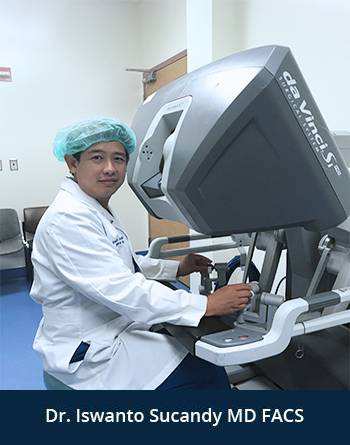Two-Stage Extended Liver Resection (TAMLAPS)
 Some patients are referred to our practice with enormous liver tumors or multiple liver tumors occupying/replacing most of the liver, requiring resection of more than 70% of the total liver volume. These patients are at risk of developing postoperative liver failure because they will not be left with adequate functioning liver parenchyma to support their metabolism after the extended resection.
Some patients are referred to our practice with enormous liver tumors or multiple liver tumors occupying/replacing most of the liver, requiring resection of more than 70% of the total liver volume. These patients are at risk of developing postoperative liver failure because they will not be left with adequate functioning liver parenchyma to support their metabolism after the extended resection.
At least 30% of healthy functioning liver parenchyma must remain after resection to avoid postoperative liver failure. Traditionally, a portal vein embolization by an interventional radiologist is done to embolize the ipsilateral portal vein going into the tumor side. This maneuver will also induce contralateral liver hypertrophy (growth) in about 6-8 weeks. This procedure is successful in about 70% of cases. In the other 30%, the contralateral liver fails hypertrophy. To mitigate this, we have adopted a two stage extended liver resection technique, known as ALPPS procedure (Associating Liver Partition and Portal Vein Ligation for Staged Hepatectomy).
Contact Dr. Iswanto Sucandy for Reliable Two Stage Hepatectomy
In our liver cancer program, we modified two stage hepatectomy under a stringent review board protocol to increase its safety and renamed it TAMLAPS (Tampa Associating Microwave Liver Ablation and Portal Vein Ligation for Staged Hepatectomy). We also incorporated a minimally invasive robotic technique in this operation to decrease postoperative complications and shorten postoperative recovery.
During the first stage, a robotic diagnostic examination of the abdominal cavity and the liver is undertaken. After excluding tumor spread within the abdomen, we undertake a robotic portal vein ligation and liver partition using a microwave ablation system. About 2-3 weeks later, the contralateral liver segments hypertrophy significantly to greater than 30%, reducing the chance of liver failure after extended resection.
A special CT scan protocol with a volumetric rendering method is obtained to document the percentage of liver hypertrophy. At the second stage, the extended liver resection removing the liver tumor(s) with curative intent is then completed.


